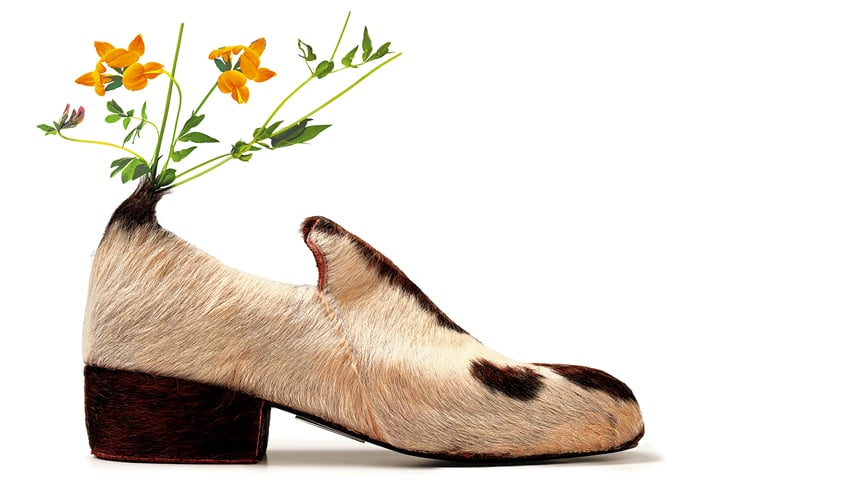IN FIELD, Fork, Fashion designer Alice V Robinson begins a ground-breaking journey into the origin story of leather and its intrinsic connection to food and farming. As a fashion student at the Royal College of Art, Robinson started to question where leather came from and the story behind each hide. Despite being a byproduct of the meat industry, leather is universally acknowledged as a luxury material, from which desirable bags, shoes and clothing are made. But as Alice soon discovered it is almost impossible to uncover the provenance and practices that have gone into producing even the most high-end products.
A spokesperson for Chelsea Green said, “In an age where fast fashion is a growing concern and labels are working to become more sustainable, there is little discussion about the environmental and ethical impacts of leather, and how the animals, farmers, abattoirs, butchers, tanners and many others create a supply chain for this luxury product.”
In an effort to trace the origins of the materials she was working with, Robinson created a supply chain of her own for Collection 374, which would be unveiled at the Victoria & Albert Museum. She began the journey at the origins of all leather – the animal. This took her back to her childhood home in rural Shropshire, where she bought Bullock 374 from Charity Farm, and followed its journey from farm to abattoir, on to her local butchery, followed by the tannery and finally to her studio.
Meanwhile, Alice V Robinson told the Farm Gate podcast, “Bullock 374 was a Longhorn/Limousine cross, reared on a farm near to where I grew up. The book looks at the story of Bullock 374 and the farming, food and fashion it is connected to. It really starts with the provenance and the history of the animal and what that means for the fashion that’s made from it. My interest in leather and provenance was because I believed that that information was really crucial to decisions I wanted to take as a designer, and that information was not readily available. I really wanted to be led by that information. By going back to the origin story of Bullock 374 and understanding more about the journey that one animal takes from field through to finished fibre – and then being able to have that direct a design process – was something I felt was a crucial part of my design education when I working with a natural fibre that was connected to farms and landscapes.”
Field, Fork, Fashion culminates with Robinson’s own design practice as she creates a zero-waste collection based on Bullock 374. Working with the leather, full of character and marks from Bullock 374’s life on the farm, Robinson’s design decisions respected the whole animal, even incorporating the bones and horns used for buttons and clasps, and the meat, which was butchered and shared within her local community as well as served at a special event celebrating the V&A exhibit. Through this incredibly labour-intensive process, Alice’s passion and commitment allowed her to see the bigger picture – connecting farm, food and fashion for the first time.
Field, Fork, Fashion is a testament to the true meaning of provenance, value and beauty, and how this can be better reflected in our own decisions around the clothes we buy and the food, farming and fibre systems in which we all participate in.
Field, Fork, Fashion is available from booksellers now
Alice V Robinson and Sara Grady are now co-founders of British Pasture Leather, the first supply of leather made from the hides of animals raised on regenerative farms in the UK.
A Farm Gate podcast with Alice and Sarah, called How to wear Bullock 374, will be out next week on 8point9.com
